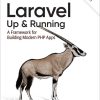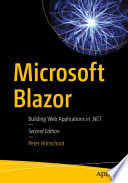Go Building Web Applications 1st Edition by Nathan Kozyra, Mat Ryer 1787123499 9781787123496
$50.00 Original price was: $50.00.$25.00Current price is: $25.00.
Go Building Web Applications 1st Edition by Nathan Kozyra, Mat Ryer- Ebook PDF Instant Download/Delivery: 1787123499, 9781787123496
Full download Go Building Web Applications 1st Edition after payment

Product details:
ISBN 10: 1787123499
ISBN 13: 9781787123496
Author: Nathan Kozyra, Mat Ryer
About This Book
-
An easy-to-follow guide that provides everything a developer needs to know to build end-to-end web applications in Go
-
Write interesting and clever, but simple code, and learn skills and techniques that are directly transferable to your own projects
-
A practical approach to utilize application scaffolding to design highly scalable programs that are deeply rooted in go routines and channels
Who This Book Is For
This book is intended for developers who are new to Go, but have previous experience of building web applications and APIs.
What You Will Learn
-
Build a fully featured REST API to enable client-side single page apps
-
Utilize TLS to build reliable and secure sites
-
Learn to apply the nuances of the Go language to implement a wide range of start-up quality projects
-
Create websites and data services capable of massive scale using Go’s net/http package, exploring RESTful patterns as well as low-latency WebSocket APIs
-
Interact with a variety of remote web services to consume capabilities ranging from authentication and authorization to a fully functioning thesaurus
-
Explore the core syntaxes and language features that enable concurrency in Go
-
Understand when and where to use concurrency to keep data consistent and applications non-blocking, responsive, and reliable
-
Utilize advanced concurrency patterns and best practices to stay low-level without compromising the simplicity of Go itself
In Detail
Go is an open source programming language that makes it easy to build simple, reliable, and efficient software. It is a statically typed language with syntax loosely derived from that of C, adding garbage collection, type safety, some dynamic-typing capabilities, additional built-in types such as variable-length arrays and key-value maps, and a large standard library.
This course starts with a walkthrough of the topics most critical to anyone building a new web application. Whether it’s keeping your application secure, connecting to your database, enabling token-based authentication, or utilizing logic-less templates, this course has you covered.
Scale, performance, and high availability lie at the heart of the projects, and the lessons learned throughout this course will arm you with everything you need to build world-class solutions. It will also take you through the history of concurrency, how Go utilizes it, how Go differs from other languages, and the features and structures of Go’s concurrency core. It will make you feel comfortable designing a safe, data-consistent, and high-performance concurrent application in Go.
This course is an invaluable resource to help you understand Go’s powerful features to build simple, reliable, secure, and efficient web applications.
Style and approach
This course is a step-by-step guide, which starts off with the basics of go programming to build web applications and will gradually move on to cover intermediate and advanced topics. You will be going through this smooth transition by building interesting projects along with the authors, discussing significant options, and decisions at each stage, while keeping the programs lean, uncluttered, and as simple as possible.
Go Building Web Applications 1st Table of contents:
1. Module 1
1. Introducing and Setting Up Go
Installing Go
Structuring a project
Code conventions
Importing packages
Handling private repositories
Dealing with versioning
Introducing the net package
Hello, Web
Summary
2. Serving and Routing
Serving files directly
Basic routing
Using more complex routing with Gorilla
Redirecting requests
Serving basic errors
Summary
3. Connecting to Data
Connecting to a database
Creating a MySQL database
Using GUID for prettier URLs
Handling 404s
Summary
4. Using Templates
Introducing templates, context, and visibility
HTML templates and text templates
Displaying variables and security
Using logic and control structures
Summary
5. Frontend Integration with RESTful APIs
Setting up the basic API endpoint
RESTful architecture and best practices
Creating our first API endpoint
Implementing security
Creating data with POST
Modifying data with PUT
Summary
6. Sessions and Cookies
Setting cookies
Capturing user information
Creating users
Enabling sessions
Letting users register
Letting users log in
Initiating a server-side session
Creating a store
Utilizing flash messages
Summary
7. Microservices and Communication
Introducing the microservice approach
Pros and cons of utilizing microservices
Understanding the heart of microservices
Communicating between microservices
Putting a message on the wire
Reading from another service
Summary
8. Logging and Testing
Introducing logging in Go
Logging to IO
Multiple loggers
Formatting your output
Using panics and fatal errors
Introducing testing in Go
Summary
9. Security
HTTPS everywhere – implementing TLS
Preventing SQL injection
Protecting against XSS
Preventing cross-site request forgery (CSRF)
Securing cookies
Using the secure middleware
Summary
10. Caching, Proxies and Improved Performance
Identifying bottlenecks
Implementing reverse proxies
Implementing caching strategies
Using Least Recently Used
Caching by file
Caching in memory
Implementing HTTP/2
Summary
2. Module 2
1. Chat Application with Web Sockets
A simple web server
Templates
Doing things once
Using your own handlers
Properly building and executing Go programs
Modeling a chat room and clients on the server
Modeling the client
Modeling a room
Concurrency programming using idiomatic Go
Turning a room into an HTTP handler
Use helper functions to remove complexity
Creating and using rooms
Building an HTML and JavaScript chat client
Getting more out of templates
Tracing code to get a look under the hood
Writing a package using TDD
Interfaces
Unit tests
Red-green testing
Implementing the interface
Unexported types being returned to users
Using our new trace package
Making tracing optional
Clean package APIs
Summary
2. Adding Authentication
Handlers all the way down
Making a pretty social sign-in page
Endpoints with dynamic paths
OAuth2
Open source OAuth2 packages
Tell the authentication providers about your app
Implementing external logging in
Logging in
Handling the response from the provider
Presenting the user data
Augmenting messages with additional data
Summary
3. Three Ways to Implement Profile Pictures
Avatars from the authentication server
Getting the avatar URL
Transmitting the avatar URL
Adding the avatar to the user interface
Logging out
Making things prettier
Implementing Gravatar
Abstracting the avatar URL process
The authentication service and avatar’s implementation
Using an implementation
Gravatar implementation
Uploading an avatar picture
User identification
An upload form
Handling the upload
Serving the images
The Avatar implementation for local files
Supporting different file types
Refactoring and optimizing our code
Replacing concrete types with interfaces
Changing interfaces in a test-driven way
Fixing existing implementations
Global variables versus fields
Implementing our new design
Tidying up and testing
Combining all three implementations
Summary
4. Command-line Tools to Find Domain Names
Pipe design for command-line tools
Five simple programs
Sprinkle
Exercise – configurable transformations
Domainify
Exercise – making top-level domains configurable
Coolify
Synonyms
Using environment variables for configuration
Consuming a web API
Getting domain suggestions
Available
Composing all five programs
One program to rule them all
Summary
5. Building Distributed Systems and Working with Flexible Data
System design
Database design
Installing the environment
NSQ
NSQ driver for Go
MongoDB
MongoDB driver for Go
Starting the environment
Votes from Twitter
Authorization with Twitter
Extracting the connection
Reading environment variables
Reading from MongoDB
Reading from Twitter
Signal channels
Publishing to NSQ
Gracefully starting and stopping
Testing
Counting votes
Connecting to the database
Consuming messages in NSQ
Keeping the database updated
Responding to Ctrl + C
Running our solution
Summary
6. Exposing Data and Functionality through a RESTful Data Web Service API
RESTful API design
Sharing data between handlers
Wrapping handler functions
API key
Database session
Per request variables
Cross-browser resource sharing
Responding
Understanding the request
A simple main function to serve our API
Using handler function wrappers
Handling endpoints
Using tags to add metadata to structs
Many operations with a single handler
Reading polls
Creating a poll
Deleting a poll
CORS support
Testing our API using curl
A web client that consumes the API
An index page showing a list of polls
A page to create a new poll
A page to show details of the poll
Running the solution
Summary
7. Random Recommendations Web Service
Project overview
Project design specifics
Representing data in code
Public views of Go structs
Generating random recommendations
Google Places API key
Enumerators in Go
Test-driven enumerator
Querying the Google Places API
Building recommendations
Handlers that use query parameters
CORS
Testing our API
Web application
Summary
8. Filesystem Backup
Solution design
Project structure
Backup package
Obvious interfaces?
Implementing ZIP
Has the filesystem changed?
Checking for changes and initiating a backup
Hardcoding is OK for a short while
The user command-line tool
Persisting small data
Parsing arguments
Listing the paths
String representations for your own types
Adding paths
Removing paths
Using our new tool
The daemon backup tool
Duplicated structures
Caching data
Infinite loops
Updating filedb records
Testing our solution
Summary
3. Module 3
1. An Introduction to Concurrency in Go
Introducing goroutines
A patient goroutine
Implementing the defer control mechanism
Using Go’s scheduler
Using system variables
Understanding goroutines versus coroutines
Implementing channels
Channel-based sorting at the letter capitalization factory
Cleaning up our goroutines
Buffered or unbuffered channels
Using the select statement
Closures and goroutines
Building a web spider using goroutines and channels
Summary
2. Understanding the Concurrency Model
Understanding the working of goroutines
Synchronous versus asynchronous goroutines
Designing the web server plan
Visualizing concurrency
RSS in action
An RSS reader with self diagnostics
Imposing a timeout
A little bit about CSP
The dining philosophers problem
Go and the actor model
Object orientation
Demonstrating simple polymorphism in Go
Using concurrency
Managing threads
Using sync and mutexes to lock data
Summary
3. Developing a Concurrent Strategy
Applying efficiency in complex concurrency
Identifying race conditions with race detection
Using mutual exclusions
Exploring timeouts
Importance of consistency
Synchronizing our concurrent operations
The project – multiuser appointment calendar
Visualizing a concurrent pattern
Developing our server requirements
Web server
The Gorilla toolkit
Using templates
Time
Endpoints
Custom structs
A multiuser Appointments Calendar
A note on style
A note on immutability
Summary
4. Data Integrity in an Application
Getting deeper with mutexes and sync
The cost of goroutines
Working with files
Getting low – implementing C
Touching memory in cgo
The structure of cgo
The other way around
Getting even lower – assembly in Go
Distributed Go
Some common consistency models
Distributed shared memory
First-in-first-out – PRAM
Looking at the master-slave model
The producer-consumer problem
Looking at the leader-follower model
Atomic consistency / mutual exclusion
Release consistency
Using memcached
Circuit
Summary
5. Locks, Blocks, and Better Channels
Understanding blocking methods in Go
Blocking method 1 – a listening, waiting channel
Sending more data types via channels
Creating a function channel
Using an interface channel
Using structs, interfaces, and more complex channels
The net package – a chat server with interfaced channels
Handling direct messages
Examining our client
Blocking method 2 – the select statement in a loop
Cleaning up goroutines
Blocking method 3 – network connections and reads
Creating channels of channels
Pprof – yet another awesome tool
Handling deadlocks and errors
Summary
6. C10K – A Non-blocking Web Server in Go
Attacking the C10K problem
Failing of servers at 10,000 concurrent connections
Using concurrency to attack C10K
Taking another approach
Building our C10K web server
Benchmarking against a blocking web server
Handling requests
Routing requests
Serving pages
Parsing our template
External dependencies
Connecting to MySQL
Multithreading and leveraging multiple cores
Exploring our web server
Timing out and moving on
Summary
7. Performance and Scalability
High performance in Go
Getting deeper into pprof
Parallelism’s and concurrency’s impact on I/O pprof
Using the App Engine
Distributed Go
Types of topologies
Type 1 – star
Type 2 – mesh
The Publish and Subscribe model
Serialized data
Remote code execution
Other topologies
Message Passing Interface
Some helpful libraries
Nitro profiler
Heka
GoFlow
Memory preservation
Garbage collection in Go
Summary
8. Concurrent Application Architecture
Designing our concurrent application
Identifying our requirements
Using NoSQL as a data store in Go
MongoDB
Redis
Tiedot
CouchDB
Cassandra
Couchbase
Setting up our data store
Monitoring filesystem changes
Managing logfiles
Handling configuration files
Detecting file changes
Sending changes to clients
Checking records against Couchbase
Backing up our files
Designing our web interface
Reverting a file’s history – command line
Using Go in daemons and as a service
Checking the health of our server
Summary
9. Logging and Testing Concurrency in Go
Handling errors and logging
Breaking out goroutine logs
Using the LiteIDE for richer and easier debugging
Sending errors to screen
Logging errors to file
Logging errors to memory
Using the log4go package for robust logging
Panicking
Recovering
Logging our panics
Catching stack traces with concurrent code
Using the runtime package for granular stack traces
Summary
10. Advanced Concurrency and Best Practices
Going beyond the basics with channels
Building workers
Implementing nil channel blocks
Using nil channels
Implementing more granular control over goroutines with tomb
Timing out with channels
Building a load balancer with concurrent patterns
Choosing unidirectional and bidirectional channels
Using receive-only or send-only channels
Using an indeterminate channel type
Using Go with unit testing
GoCheck
Ginkgo and Gomega
Using Google App Engine
Utilizing best practices
Structuring your code
Documenting your code
Making your code available via go get
Keeping concurrency out of your packages
People also search for Go Building Web Applications 1st:
building web application
building modern web applications with go
zbook website
06.01 building blocks for web design
Tags:
Nathan Kozyra,Mat Ryer,Building,Applications
You may also like…
Computers - Programming
Computers - Programming
React Up Running Building Web Applications Second edition Stoyan Stefanov
Computers - Web Development
Let s Go Learn to build professional web applications with Go 2nd Edition A. Edwards
Computers - Web Development
Microsoft Blazor: Building Web Applications in .NET – Second Edition Peter Himschoot
Computers - Web Development
Computers - Web Development
Building Progressive Web Applications with Vue.js 1st Edition Carlos Rojas
Computers - Web Development
React Up Running Building Web Applications 2nd Edition Stoyan Stefanov
Computers - Programming
Computers - Programming











